Sugar Land, TX Pollen and Allergy Report for Summer 2023
Pollen Allergy Trends in Sugar Land, TX
When is pollen lowest in Sugar Land, TX?

February
Lowest month total PPM
Avg. PPM
When is pollen highest in Sugar Land, TX?

March
Highest month total PPM
Avg. PPM
How does pollen in Sugar Land, TX compare to Texas?
Sugar Land has a higher average PPM than the state of Texas.
Sugar Land yearly avg PPM:
Texas yearly avg PPM:
How does pollen in Sugar Land, TX compare to the USA?
Sugar Land has a higher average PPM than the USA.
Sugar Land yearly avg PPM:
USA yearly avg PPM:
Is pollen worse this year in Sugar Land, TX?
Spring 2023 was worse than spring 2022.
Spring 2023 PPM:
Spring 2022 PPM:
Average PPM in Sugar Land, TX
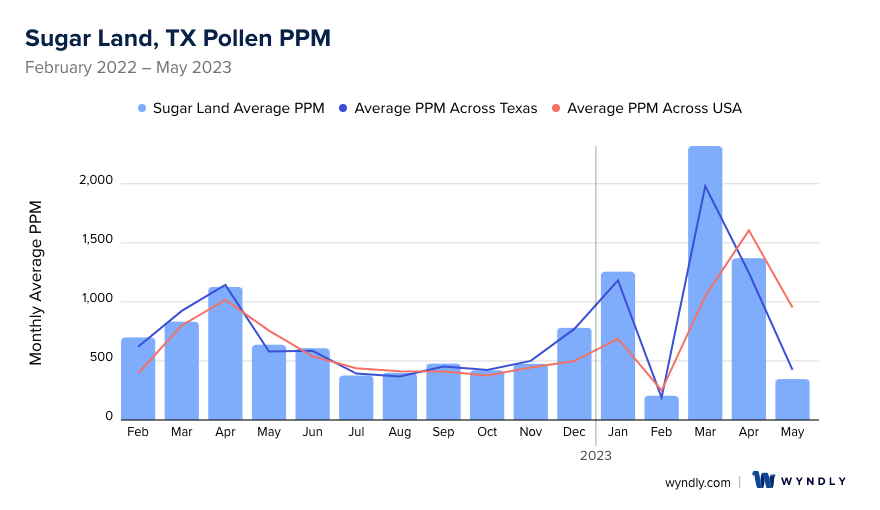

Sugar Land, TX Pollen and Allergy Breakdown by Month
Grass
When is grass pollen highest in Sugar Land, TX?
February has the highest grass pollen in Sugar Land, TX with an average PPM of
When is grass pollen lowest in Sugar Land, TX?
December has the lowest grass pollen in Sugar Land, TX with an average PPM of
Tree
When is tree pollen highest in Sugar Land, TX?
March has the highest tree pollen in Sugar Land, TX with an average PPM of
When is tree pollen lowest in Sugar Land, TX?
July has the lowest tree pollen in Sugar Land, TX with an average PPM of
Weed
When is weed pollen highest in Sugar Land, TX?
December has the highest weed pollen in Sugar Land, TX with an average PPM of
When is weed pollen lowest in Sugar Land, TX?
February has the lowest weed pollen in Sugar Land, TX with an average PPM of
Sugar Land, TX Pollen Monthly Breakdown by Pollen Type



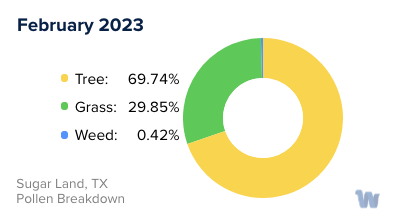
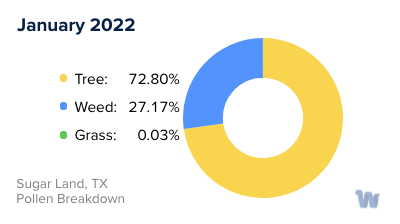
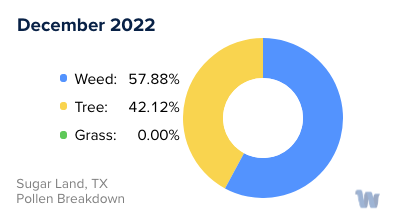
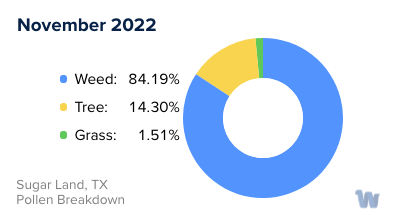


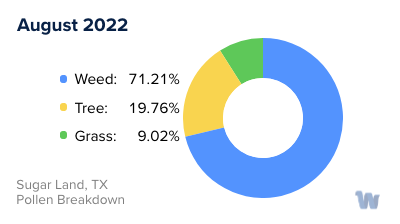

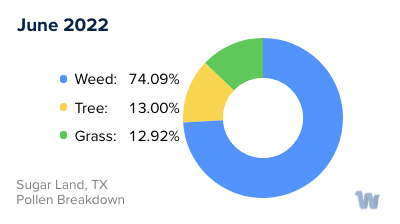

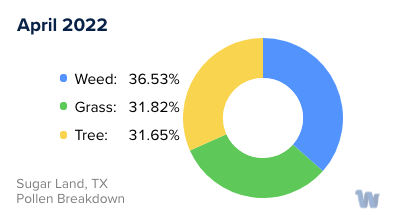

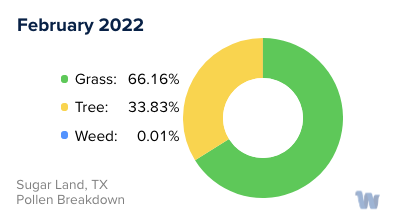
Pollen and Hay Fever in Sugar Land, TX
For those residing in Sugar Land, Texas, understanding the local pollen types and their associated seasons can be crucial in navigating the annual cycles of allergies. In Texas, more than 50 million people are affected by allergies, which begin in September and intensify with the onset of a dry winter. The state's climate cycles and weather patterns contribute to severe allergy levels, which can make certain times of the year particularly uncomfortable for many residents.
Unlike many other regions where the allergy season is confined to the spring months, Texas experiences year-round allergy issues due to its dry winters. During these mild winters, plants are able to thrive and continue their pollination process. This effectively means that while other parts of the country are experiencing freezing temperatures, some plants in Texas are entering another season of pollination, making winter a challenging season for those with allergies.
There are three primary types of pollen that contribute to allergies in Texas: ragweed, cedar tree, and grass pollen. Ragweed pollen, generated by a plant capable of producing about one billion pollen grains, can travel up to 400 miles and is a common cause of congestion, wheezing, and itchy eyes. The fall and winter months see the release of cedar tree pollen, which can trigger what locals often refer to as "cedar fever," characterized by symptoms like increased body temperature, sore throat, fatigue, sinus pressure, and itchy eyes. Finally, the grass pollen season begins around March and continues until October, with millions of pollen grains released into the air to fertilize other plants.
In summary, Sugar Land, like the rest of Texas, experiences a range of pollen types throughout the year due to its unique climate and weather patterns. Whether it's the floating ragweed pollen, the winter's cedar tree pollen, or the grass pollen of spring and summer, each brings its own challenges and symptoms to those susceptible to allergies.

